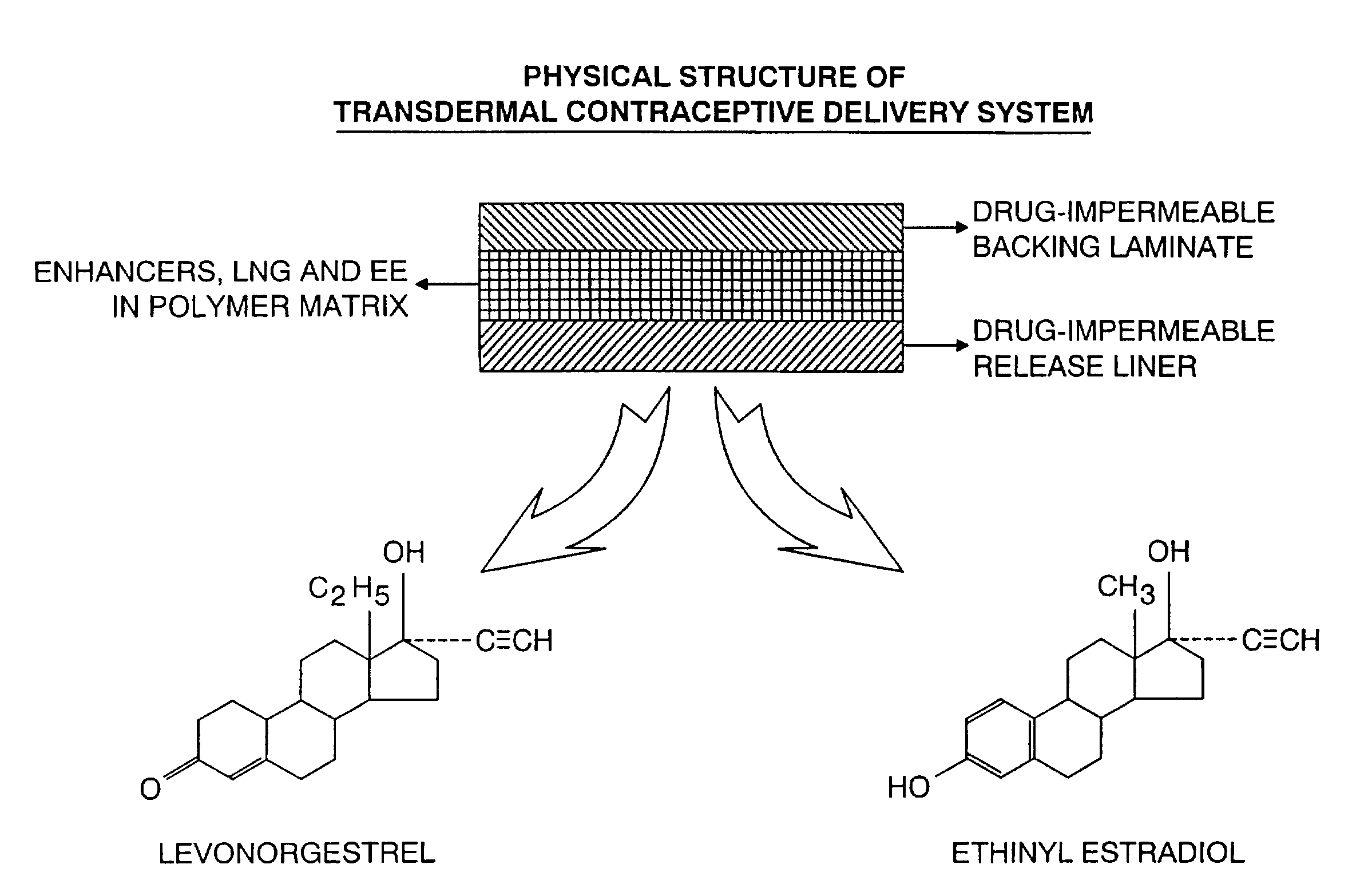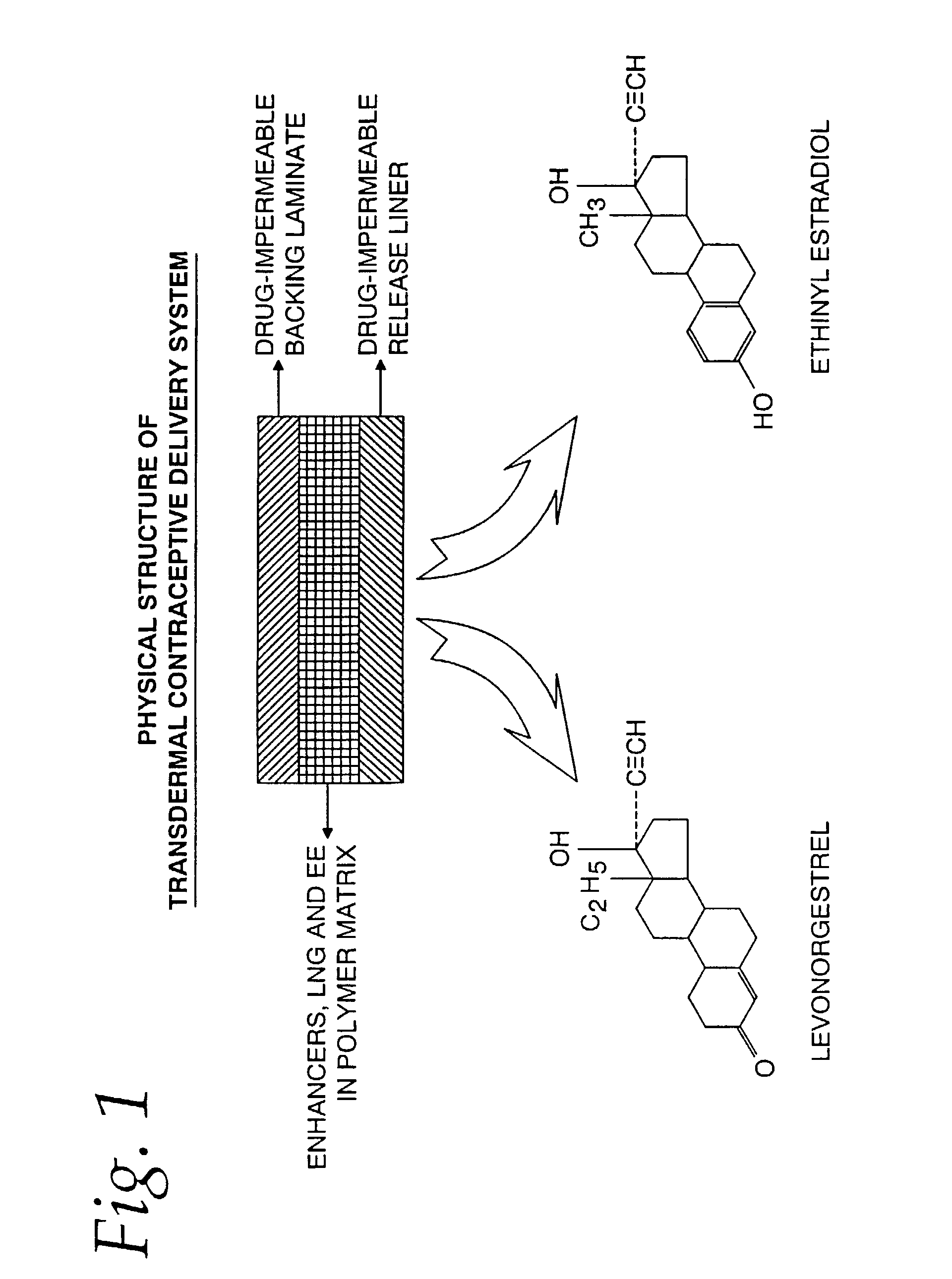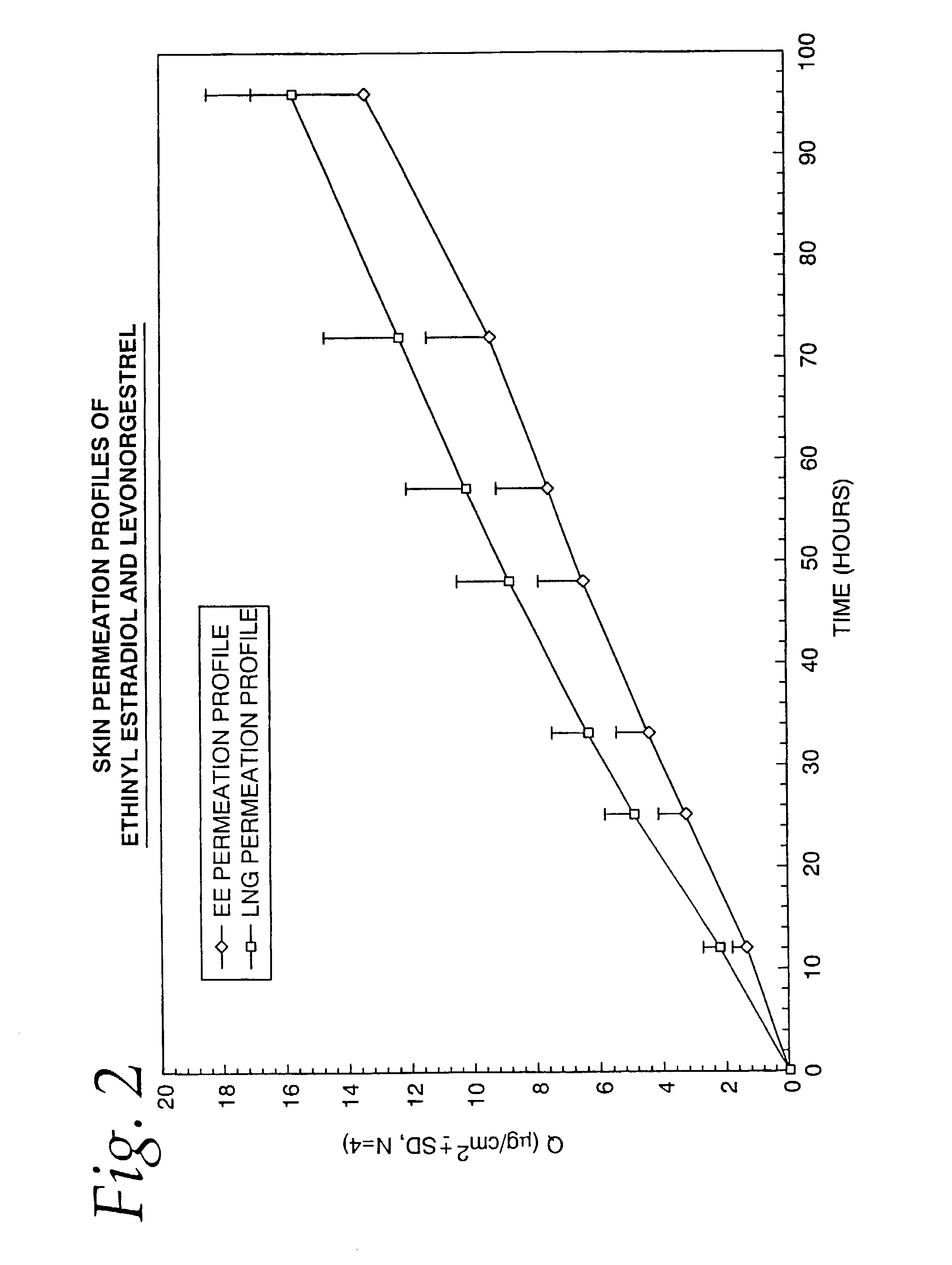Transdermal contraceptive delivery system and process
a technology of transdermal contraception and delivery system, which is applied in the direction of dressings, organic active ingredients, bandages, etc., can solve the problems of unfavorable pregnancy, unfavorable pregnancy prevention, and high risk of women over 35 years of age, so as to prevent pregnancy and reduce the concentration of skin permeation enhancers
- Summary
- Abstract
- Description
- Claims
- Application Information
AI Technical Summary
Benefits of technology
Problems solved by technology
Method used
Image
Examples
example 1
Formulation and Fabrication of TCDS Patches
[0060]The physical structure (side view) of the TCDS patch formulated and fabricated in this example is illustrated in FIG. 1.
A. Formulation
[0061]The starting solution, comprising a mixture of the ingredients prior to application or coating is shown in Table A. Sufficient amounts of the ingredients of Table A are utilized to obtain the amounts of the finished composition in Table B. Table B shows the finished adhesive polymer matrix, which is coated and dried, of the TCDS patch formulation utilized in the present invention and in this experiment:
[0062]
TABLE AIngredientsConcentration (%)Coating SolutionEthinyl Estradiol0.65Levonorgestrel1.16PVP / VA-S6300.50Enhancer Combination43.00DURO TAK 87-409852.70
[0063]
TABLE BIngredientsConcentration(%)Dried Matrix CompositionEthinyl estradiol0.31Levonorgestrel0.53PVP / VA S-6301.21Enhancer Combination20.71DURO TAK 87-409877.18
[0064]The enhancer combination contains dimethyl sulfoxide (DMSO), CERAPHIL 31, ...
example 2
In-vitro Permeation Study
[0069]To confirm that the desired skin permeation rates of both ethinyl estradiol and levonorgestrel are achieved by the TCDS patch formulation described in Example 1, the patches manufactured were subjected to an in-vitro drug permeation study using human cadaver skin on the Valia-Chien side-by-side type skin permeation cell system (Crown Glass Co, Branchburg, N.J.). The samples taken from the receptor compartment of the diffusion cell were analyzed by high performance liquid chromatography.
[0070]The in-vitro skin permeation profiles of both ethinyl estradiol and levonorgestrel were established and are shown in FIG. 2. The skin permeation flux of each drug was subsequently calculated from the steady state of the permeation profile. Based on the results of the in-vitro study, it was determined that about 60 mcg / day of levonorgestrel and 30 mcg / day of ethinyl estradiol were delivered from the 10 cm2 TCDS patch fabricated in Example 1. The in-vitro skin permea...
example 3
Dermal Toxicity Test
[0071]To investigate the potential of the developed TCDS patch formulation to cause skin sensitivity, a three-week dermal toxicity test was conducted. A total of forty-nine Hartley guinea pigs were used in the study. After the test there was an examination of each patch application. The patches of this TCDS formulation were tested on intact skin.
Skin Irritation and Sensitization Tests on Animal
[0072]A preliminary irritation study, followed by a Buehler sensitization test were conducted on the new TCDS formulation. The test article, TCDS patch, was evaluated for its potential to produce allergenic skin reactions following epicutaneous application to albino guinea pigs in comparison to a control patch (with and without enhancers), and a naïve untreated group. The TCDS patches tested were 1 cm2 and 2 cm2 which is estimated at 12.5–25.0 times the dosage of human by weight (0.4 kg for guinea pigs and 50 kg for human). The results of both skin irritation and sensitizat...
PUM
| Property | Measurement | Unit |
|---|---|---|
| Fraction | aaaaa | aaaaa |
| Fraction | aaaaa | aaaaa |
| Fraction | aaaaa | aaaaa |
Abstract
Description
Claims
Application Information
 Login to View More
Login to View More - R&D
- Intellectual Property
- Life Sciences
- Materials
- Tech Scout
- Unparalleled Data Quality
- Higher Quality Content
- 60% Fewer Hallucinations
Browse by: Latest US Patents, China's latest patents, Technical Efficacy Thesaurus, Application Domain, Technology Topic, Popular Technical Reports.
© 2025 PatSnap. All rights reserved.Legal|Privacy policy|Modern Slavery Act Transparency Statement|Sitemap|About US| Contact US: help@patsnap.com



